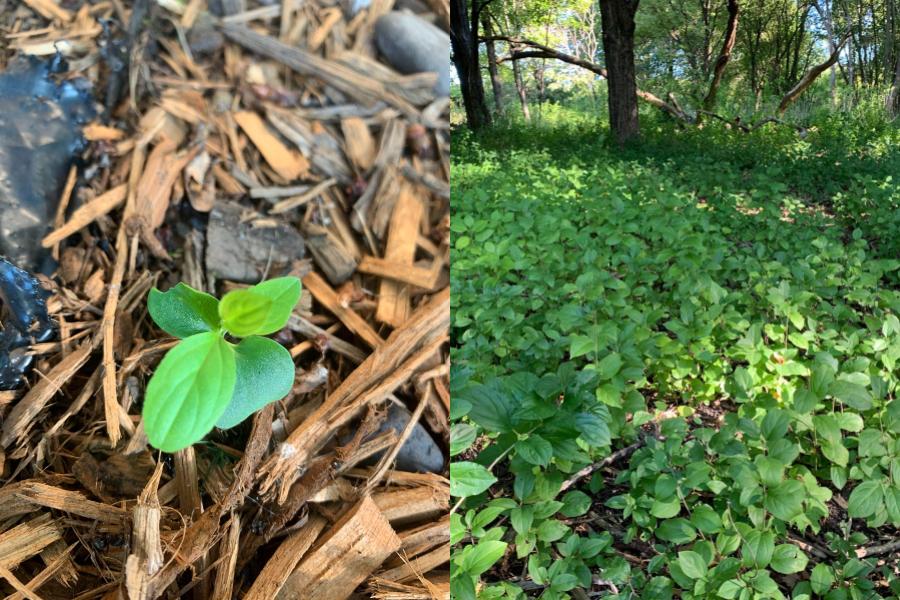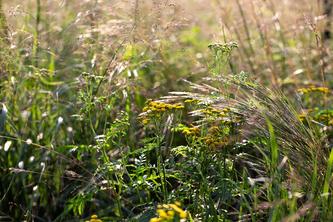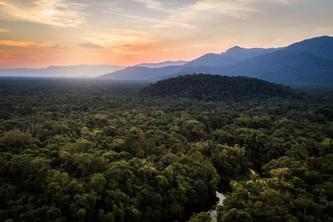
MINNEAPOLIS/ST. PAUL (06/26/2023) — According to new research from the University of Minnesota, buckthorn managers have long overestimated the plant, and in doing so, have given the invasive tree a significant advantage in spreading widely and pushing native species out of woodlands and forests throughout eastern North America.
In their recently published article in the journal Biological Invasions, the research team explains how the often-discussed timeline of buckthorn growing from seed didn’t match what they or any of their collaborators across Minnesota saw in nature. This research was funded by the Minnesota Invasive Terrestrial Plants and Pests Center (MITPPC), supported by the Minnesota Environment and Natural Resources Trust Fund as recommended by the Legislative-Citizen Commission on Minnesota Resources (LCCMR).
Traditionally, buckthorn management strategies have focused on repeated cutting and herbicide application over five or more years, mostly targeting larger stems as a practical way to approach the often daunting task of controlling the invasive tree. Smaller buckthorn are ignored in part due to a long-held belief that buckthorn seeds in the soil continually replenish the amount of small buckthorn for up to six years. It turns out that this incorrect belief is all based on a game of “telephone.”
Although some older scientific publications observed that buckthorn seeds died off quickly, contemporary communications from both public and private entities emphasized that buckthorn seeds lasted in the soil for years, a misperception that has likely stymied restoration efforts. The academic paper trail was scant, but the researchers followed it back to a 1997 newspaper article discussing a different invasive species. That article had been cited by a municipal report, which was referenced by a U.S. Forest Service document, which was echoed time and again – not once supported by data from the species it claimed to represent.
Fortunately, the U of M researchers already had a series of experiments in progress that could answer these questions: How long do buckthorn seeds remain viable in the soil? How long do the seeds threaten forest restoration efforts?
“Buckthorn forms these extremely dense carpets of seedlings — think of a massive Chia Pet on the forest floor — but that only happens in the first year after the mature trees have been cut down. So we were confused why we kept seeing this discussed as something that can happen over a six-year window, ” said lead author Michael Schuster, a researcher in the Department of Forest Resources.
The researchers found:
- Buckthorn seeds only live in the soil for one or two years, not six as commonly thought.
- Of the more than 13,000 buckthorn seeds monitored between 2017 and 2022, 97% of new buckthorn sprouted within the first year. Nearly all additional buckthorn sprouts arose in the second year.
- These observations were corroborated by concurrent surveys of seven active buckthorn management areas in Minnesota where the team observed essentially all new buckthorn showing up within the first two years after fruiting trees had been removed.
These findings suggest that a shorter period of more intense management that targets a broader range of buckthorn sizes may be sufficient to control existing buckthorn invasions. By also targeting small stems, management can be more effective since smaller plants are more vulnerable. This is also likely to lower overall management effort, although managers will need to be vigilant of stems that avoid treatment or seeds that are dispersed by birds, and improve forest health broadly.
“This should be good news for folks looking to remove buckthorn: you can cut down all the fruit-bearing trees and be confident that what remains after a year or two really is the extent of the problem. If we are more aggressive in those early interventions, we will likely have better outcomes compared to more selective approaches,” said Schuster.
The team will continue to investigate how establishing native plants to compete with buckthorn could reduce abundance and size of buckthorn established by seed.
About the College of Food, Agricultural and Natural Resource Sciences
The University of Minnesota’s College of Food, Agricultural and Natural Resource Sciences (CFANS) strives to inspire minds, nourish people, and sustainably enhance the natural environment. CFANS has a legacy of innovation, bringing discoveries to life through science and educating the next generation of leaders. Every day, students, faculty, and researchers use science to address the grand challenges of the world today and in the future. CFANS offers an unparalleled expanse of experiential learning opportunities for students and the community, with 12 academic departments, 10 research and outreach centers across the state, the Minnesota Landscape Arboretum, the Bell Museum of Natural History, and dozens of interdisciplinary centers. Learn more at cfans.umn.edu.
- Categories:
- Agriculture and Environment
- Forestry





